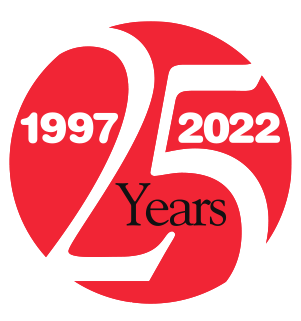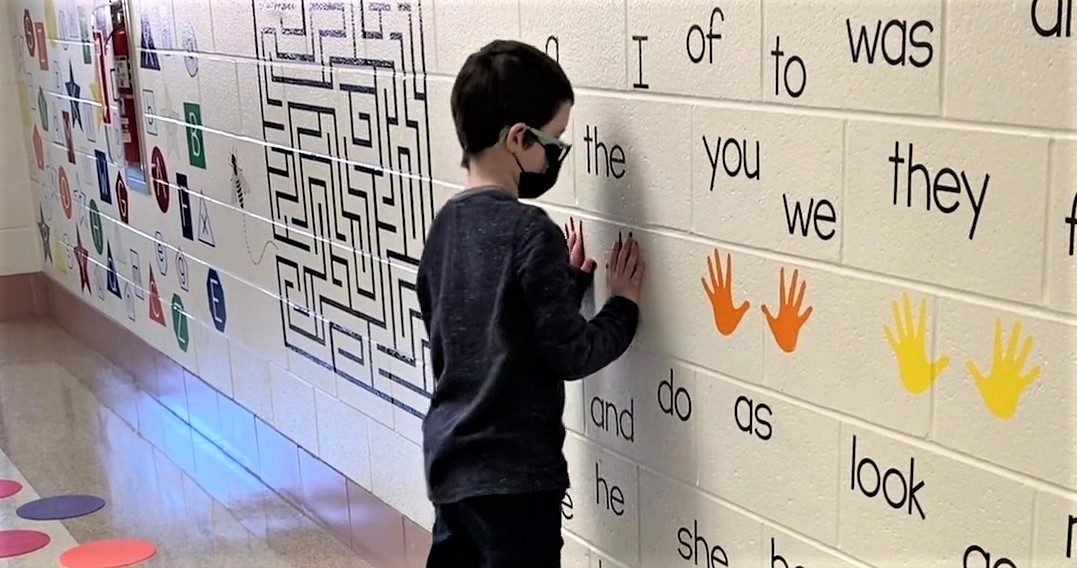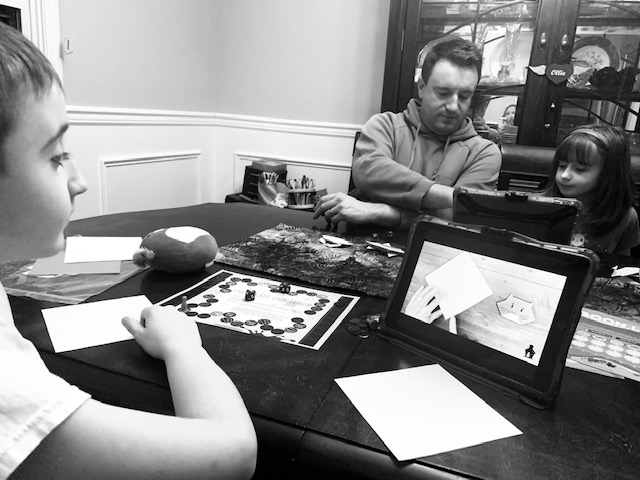
75 Bonfield families make a game out of math.
June 14, 2022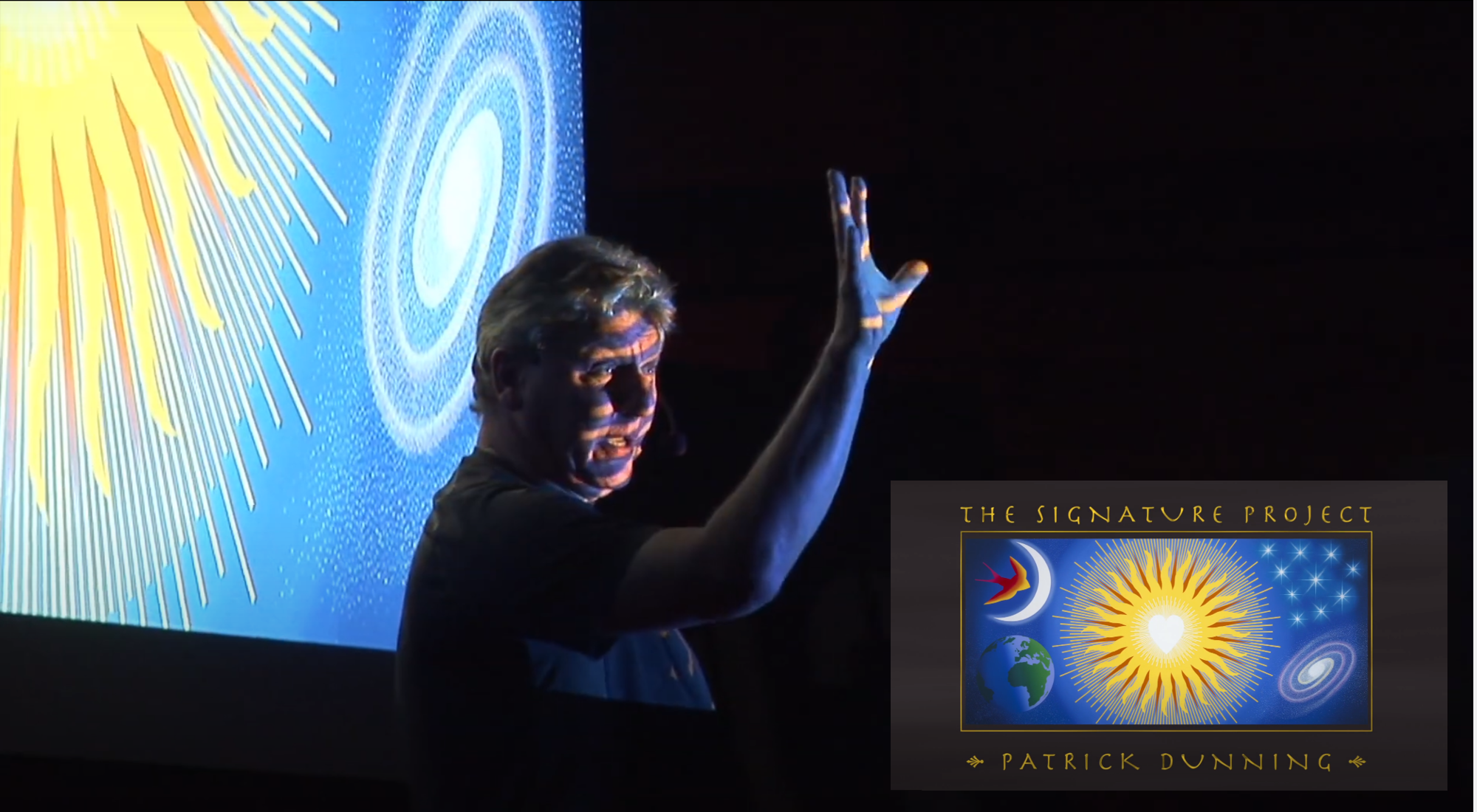
The Signature Project redefines spectacular.
September 1, 2022Sensory Walls turn nervous energy into focus for learning.
Getting kids to sit still isn’t easy. But it’s the gateway to their attention, and attention is a prime sign of receptivity. So Warwick elementary teachers come hard-wired with a motion detector, keenly attuned to every wiggle and giggle, fidget or fiddle, squirm or sway.
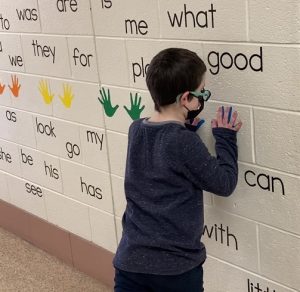 Teachers recognize that learning is both a mental exercise and a physical activity, and discover that some kids focus more acutely, for instance, when a math lesson invites movement.
Teachers recognize that learning is both a mental exercise and a physical activity, and discover that some kids focus more acutely, for instance, when a math lesson invites movement.
Everybody can benefit, though students with specific challenges often benefit most. For example, movement can “provide people with ADHD the perfect amount of stimulation to increase attention naturally,” according to The Learning Center at the University of North Carolina/Chapel Hill.
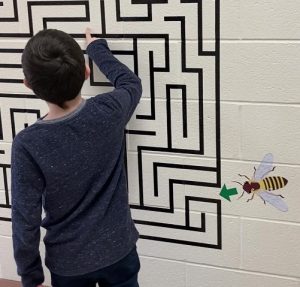 Recent research has shown that sometimes a child needs a complete break from the classroom and a different outlet for that nervous energy. At Bonfield Elementary, that outlet is called a Sensory Wall, also known as a sensory pathway. Here a student can take a quick break for structured activities in a stimulating environment.
Recent research has shown that sometimes a child needs a complete break from the classroom and a different outlet for that nervous energy. At Bonfield Elementary, that outlet is called a Sensory Wall, also known as a sensory pathway. Here a student can take a quick break for structured activities in a stimulating environment.
Put yourself in Noah’s sneakers.
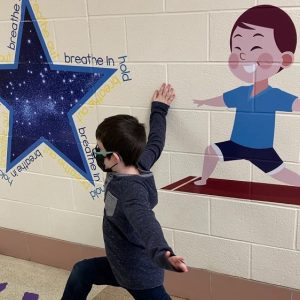 Imagine you’re a rambunctious 9-year-old boy named Noah, a third-grader at Bonfield Elementary. It’s still early Monday morning but you feel like you’ve been sitting in class for a week.
Imagine you’re a rambunctious 9-year-old boy named Noah, a third-grader at Bonfield Elementary. It’s still early Monday morning but you feel like you’ve been sitting in class for a week.
Not exactly sitting still. You listen to what your teacher is saying, but you squirm, fiddle with a shoelace, make faces at your buddy, drift off into a daydream.
That’s when you hear your teacher say…
“Noah. Noah? Maybe it’s time to hit The Wall.”
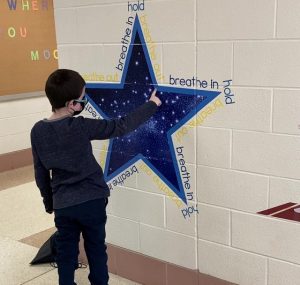 You tuck your chin down as you grin your way to the school’s new Sensory Wall. And there, thanks to a grant from the Warwick Education Foundation, you get an invigorating break from class.
You tuck your chin down as you grin your way to the school’s new Sensory Wall. And there, thanks to a grant from the Warwick Education Foundation, you get an invigorating break from class.
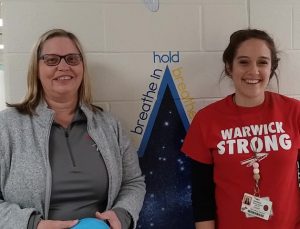
Physical therapists Dr. Tanya Myers, Miss Allison Hausman, and their team created a hands-on sensory course designed to give students a few minutes away to move and recalibrate.
Wall push-offs. Wall slaps to identify words. Buzzing like a bee
through the maze. Spelling test. Hop-scotching along the floor. Jumping through the floor ladder. Tracing a figure 8. Striking a yoga pose and holding it. At the star, controlled breathing—in, hold, release.
And back to class, refreshed and refocused on learning. Math is up next, and you’re ready to roll.
“The moment my legs begin to move, my thoughts begin to flow.” —Henry David Thoreau
“There’s a lot of research about the importance of using movement throughout the day in an organized and directed way,” says one Warwick Occupational Therapist. “We’re trying to incorporate learning concepts with some visual and motor activities.”
“Typically, they’ll use this anytime they’re a little fidgety in class,” adds another therapist. Example? “Before math class, if they’re struggling to focus, they might take a walk down here, go through the pathway, and it will help them get ready for learning. It’s helping with self-regulation when they realize they need to go on that walk and have it accessible to them at all times.”
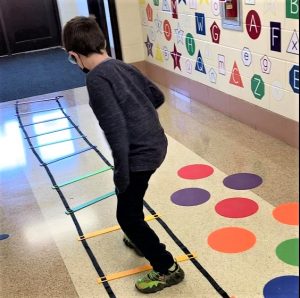 Dr. Myers emphasizes that “we’ve also learned more about teaching and now know through research [and classroom experience] that movement activities are so important to enhancing attention, which is crucial for sitting in classrooms and learning new things.”
Dr. Myers emphasizes that “we’ve also learned more about teaching and now know through research [and classroom experience] that movement activities are so important to enhancing attention, which is crucial for sitting in classrooms and learning new things.”
More Sensory Walls will be complete for next school year.
The $8,000 grant awarded by the Warwick Education Foundation covers all four of the district’s elementary schools. Based on the success stories at Bonfield, and the particular space available at the other schools, all four custom Sensory Walls are expected to be up and running for the 2022-2023 school year.

